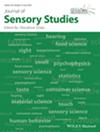Time-intensity data analysis in terms of R-index measures transformed from menopause rating scale data collected in a longitudinal menopause tablet perceptual efficacy study
Abstract
A 12-week longitudinal study with 247 US menopausal women was undertaken to investigate the perceptual efficacy of a tablet formulated with an extract of Siberian rhubarb to provide relief from menopausal symptoms. The 5-point menopause rating scale (MRS) (0 = none; 1 = mild; 2 = moderate; 3 = severe; 4 = extremely severe) was used to measure symptom intensity. The MRS scale, an ordinal categorical scale, was transformed into an R-index, a ratio scale, using the frequencies of the MRS categories. Symptom relief was compared to an initial week baseline measure; defined as R-index = 0.5. An index, A.RDEX, which is based on area under the R-index curve (AUC) in the range of 0–84 days was used to measure percentage efficacy of symptom relief. Results show that symptom relief occurs through the first 17 days in terms of R-index = 0.64 for the total score and improves with continued use, reaching an A.RDEX = 0.42 by 84 days, suggesting about 42% relief considering all 11 MRS attributes.
Practical Applications
MRS ratings data can be transformed into an R-index using MRS category frequencies at an initial week and a subsequent week. Functional data analysis for R-index values provides an advanced statistical model for analysis of perceptual differences throughout longitudinal studies that can examine MRS attribute effects over time. R codes are developed and provided in the paper to transform MRS data into R-index measures and to conduct functional data analysis for R-index measures obtained from different time points (weeks or days).

 求助内容:
求助内容: 应助结果提醒方式:
应助结果提醒方式:


